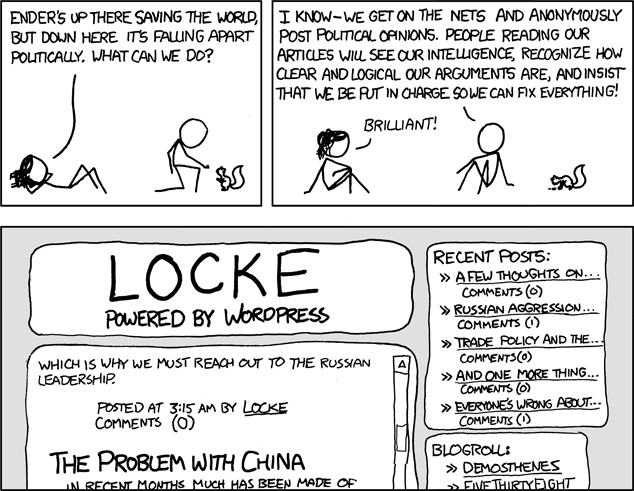Our Great Mother does not take sides, Jake. She protects only the balance of life.
-Neytiri, Avatar, December 2009.I call upon our neighbors, even those with whom we have not yet reached diplomatic relations, to join hands in an effort to save our region. Political disagreements should not hinder environmental co-operation. Carbon molecules carry no passport. Rivers require no visa. Pollution travels with them. All of us - Jews, Muslims and Christians - pray that the Jordan River will flow, fresh and holy.
- Shimon Peres, Israeli President, Copenhagen Climate Talks, December 2009.
If our planet had an Academy Award ceremony, I think it would be inviting fewer politicians and scientists this year and more CGI-enhanced, leggy, pony-tailed, 12-ft smurfs carrying bows and wearing DayGLO paint.
This month, scientists and politicians alike were watching the Copenhagen Climate talks like it was the Giants vs. Patriots Super Bowl. Obama was suppose to be our young Eli Manning, the upstart Giants QB, bravely facing the undefeated (and viciously scheming) Patriots-like behemoth--China. Right up to the last day (long before our young Eli took the field to play one last quarter of hardball with one stubborn geologist), the "white coats" were deep into their doomsday prophesying. Thomas Stoker from the IPCC, repeated and repeated "warming in the climate system is unequivocal" (a direct quote from 2007 IPCC's 4th Assessment Report). Robert Dunbar, of the Center for Ocean Solutions, reminded us that the ocean levels weren't just rising but--for extra fun--they were also lapping carbonic acid onto our shores and marine life (how are you going to like sticking your toesies in that?).
The real "fourth-quarter" at this event began with the struggle to set a legitimate, legally-binding, point-of-no-return, internationally approved, scientifically justified, CO2 target for our planet. Basically, the question at hand was as follows:
Were we, as the foremost governing species on this planet, going to:
Option A) Arrest our descent into planetary madness and destruction by capping our CO2 emissions below their current levels (387 ppm and increasing 2-9 ppm annually) by setting the benchmark at 300-350 ppm (parts per million). True, the 350 ppm max number is a much trumpeted figure by the (so-called) treehugging community, but it is definitely not without it's scientific proof and consensus. 350 ppm takes into account the numerous scientific factoids that show that our planet will be absent one Arctic tophat in 30 years should our emissions continue to push towards and beyond 390 ppm. This number corresponds to maintaining almost all existing modern marine life which evolved and adapted in CO2 levels which ranged from 180 ppm to 280 ppm. 350 ppm also refers to terrestrial life, as one (of many) studies have shown that the biodiversity balance in eco-hotspots, like the Amazon, are shifting as inflated CO2 levels drive particular plant species to drastically out-compete other plant species.
350 ppm also corresponds to keeping landmasses that are a mere 1-meter above sea level (including not only small island states, but most of the Netherlands, extensive tracts of land in Bangladesh, and the eastern United States) from becoming underwater cities.
Or...
Option B) Sign up for inevitable, irreversible, planetary feedback-cycle of disaster by capping CO2 emissions at the politically popular 450 ppm. And when I say "popular", I mean popular in the sense that it has it's own US Bill (see: Waxman-Markey climate and energy bill—aka the American Clean Energy and Security Act, ACES, H.R. 2454) and the political backing of three recession crippled nations- the U.S., Britain, and Australia (who, incidentally, would all have to slash carbon dioxide emissions by 5% each year over the next decade to hit the 450ppm target).
And that's basically what it boils down to.
Scientific evidence shows that our planet and population levels cannot be sustained at 450 ppm. Political leaders show that our economy cannot function or meet the 350 ppm cap. Ultimately, it's a scientific-economic conundrum. Even though an emissions cap of 450 ppm would mean nothing less then water touching the torch of the Statue of Liberty, California becoming an island, and coral reefs only existing in history books...at our current economic state, 450 ppm is the best we can do and hope for. It's unfortunate that science doesn't support that message, but we must accept.
Which, incidentally, is the background story of Avatar.
The latest in James Cameron-movie wizardry brings us the tale of a gone-broke, gone-legless, gone-native ex-marine who lands on planet Pandora: mankind's last hope for economic and environmental salvation (...and if Obama and his politcal friends are damn lucky, this place actually might exist). I won't spoil specific plot details for the few of you who haven't seen it, but suffice to say the movie takes place in 2154, when Earth is a "dying planet". The hero, who is white (notably following the tradition of all gone-native Hollywood storyline's, i.e. Dances with Wolves, Ferngullyy, Pocahontas, and Last of the Mohicans), turns himself into a giant blue 'avatar' and mingles with Pandora's indigenous population, the Na'vi. An identity struggle ensues (...oh dear, am I white or am I blue?...) while the marine finds himself a pawn caught between the differing priorities and objectives of science and economy.
The problem really seems to begin with who built the blue suit. Avatar's were originally designed for the relatively benign purpose of researching and studying the Na'vi and Pandora. However, this scientific cocktail was bought and paid for by a mining operation, for the chief purpose of identifying materials and producing 'diplomatic' indigenous relations (i.e. indigenous relocation from prime mining sites). En-route to producing 'diplomatic' relations, the science team makes several important discoveries regarding Pandora's unique environment, discoveries that could essentially create the roadmap for successful cohabitation between the two species. Discoveries that could--possibly--improve human health and existence.
However, the interests of economy and the robber barons funding the Avatar program were not swayed by these discoveries. Fear of financial loss, and of having a "bad fiscal quarter", drives the mining CEO to dismiss the pleading scientists and push ahead with the usual raping and pillaging of planetary resources. Barking that "it's a forest, they can find another tree!" the CEO kicks the Na'vi out of their native home, and embarks on a quest for planetary ruin.
Financial investors do need their payday, after all.
The story of Avatar is much more black-and-white then the story of Copenhagen, but the primary character's are all there (...just in different colors, albeit). It's a playoff between the politicians who are worried about the economy and the scientists that are worried about the environment. The politicians are functioning on this belief that there can be a compromise (i.e. 450 ppm instead of 350 ppm) between the interests of environment and economy. They believe in this compromise even though much of the science shows that such a compromise is not sustainable or even environmentally beneficial. They believe in this compromise to the point that they are ready to dismiss science.
Unlike the character's in Avatar, climate scientists do not have the speaking finesse of Sigourney Weaver to argue their position against the glib likes of Obama. Trained to be objective rather then emotional, they do not have the impassioned speeches needed to convince a depressed public floundering in debt and unemployment that 450 ppm is simply NOT an option. Real-life scientists are not movie stars or even actors. They are merely people who were hired to tell us what is the best environmental solution to an environmental problem.
They have told us. Now it is our turn, as citizens, to NOT accept the argument that "it's a forest, they can find another tree!"....because, truth is, this isn't Pandora, and there is no other tree..











